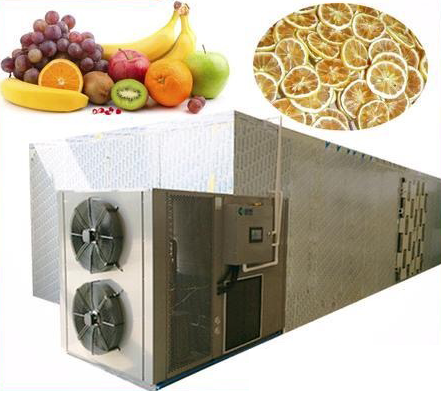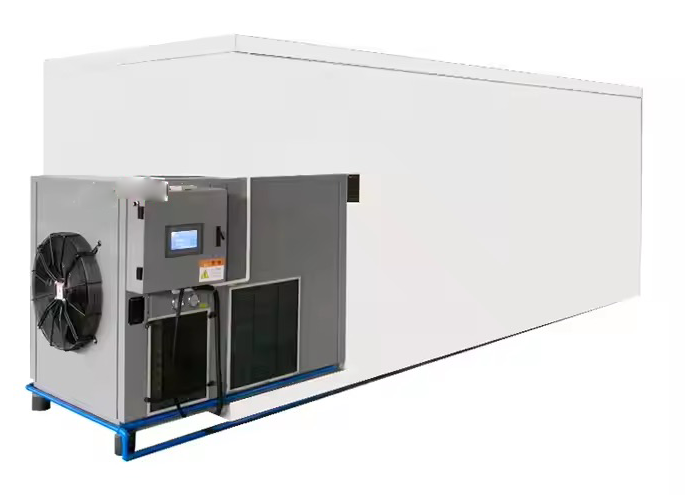
Content Menu
● Introduction
● Understanding Heat Pump Dryers
>> How Heat Pump Dryers Work
● Where Does the Moisture Go?
● Benefits of Using Heat Pump Dryers for Food Processing
>> Detailed Advantages
● Applications in Food Drying
● Factors Influencing Moisture Removal
>> 1. Temperature
>> 2. Airflow
>> 3. Humidity Levels
>> 4. Product Thickness
● Maintenance of Heat Pump Dryers
● Innovations in Heat Pump Drying Technology
>> 1. Hybrid Systems
>> 2. Smart Technology Integration
>> 3. Improved Heat Recovery Systems
● Conclusion
● FAQ
>> 1. What is a heat pump dryer?
>> 2. How does moisture removal occur in a heat pump dryer?
>> 3. What types of foods can be dried using heat pump dryers?
>> 4. Are heat pump dryers environmentally friendly?
>> 5. How can I maintain my heat pump dryer?
● Citations:
Introduction
In the realm of food preservation, drying plays a crucial role. Food drying not only extends shelf life but also enhances flavors and maintains nutritional value. Among the various drying technologies available, heat pump dryers have gained significant attention due to their efficiency and environmental benefits. This article explores the mechanics of heat pump dryers, focusing on where the moisture goes during the drying process, while also delving into their applications in food drying.

Understanding Heat Pump Dryers
Heat pump dryers utilize a unique mechanism to remove moisture from food products. Unlike traditional dryers that expel hot air, heat pump dryers recycle air and use a refrigerant cycle to extract moisture. This process is not only energy-efficient but also allows for precise temperature control, making it ideal for delicate food items.
How Heat Pump Dryers Work
1. Air Intake: The dryer draws in ambient air.
2. Heating the Air: The air is heated using a compressor that circulates refrigerant.
3. Moisture Extraction: As the warm air passes over the food, moisture evaporates and is absorbed by the air.
4. Condensation: The moist air is then directed to a heat exchanger where it cools down, causing the moisture to condense into water.
5. Water Removal: The condensed water is collected and drained away, while the dried air is reheated and recirculated.
Where Does the Moisture Go?
In a heat pump dryer, understanding where the moisture goes is essential for optimizing drying efficiency and product quality. The moisture extracted from food products travels through several stages:
- Evaporation: Initially, moisture evaporates from the food surface into the heated air.
- Condensation: This moist air is then cooled in the heat exchanger, leading to condensation of water vapor.
- Collection: The condensed water collects in a reservoir or drains away automatically.
Benefits of Using Heat Pump Dryers for Food Processing
Heat pump dryers offer several advantages over conventional drying methods:
- Energy Efficiency: They consume less energy by recycling heat.
- Temperature Control: Precise temperature regulation helps maintain food quality.
- Reduced Nutrient Loss: Lower drying temperatures preserve vitamins and minerals.
- Environmentally Friendly: Reduced energy consumption leads to lower carbon emissions.

Detailed Advantages
1. Increased Energy Efficiency: The primary advantage of using a food heat pump dryer is its high energy efficiency. Unlike traditional drying methods, which generate heat, heat pump dryers extract it from the environment, significantly reducing energy consumption[1].
2. Cost-Effectiveness: Although the initial investment may be higher than traditional methods, long-term savings are substantial due to lower operational costs[1].
3. Precise Temperature Control: Sensors and thermostats maintain optimal temperatures for drying, resulting in uniform products with consistent taste and texture[1].
4. Retention of Nutrients: The gentle drying process preserves essential nutrients better than other methods such as sun-drying or hot-air drying[1][2].
5. Reduced Drying Time: Heat pump dryers can significantly shorten drying times due to their efficient heat transfer capabilities[1].
6. Increased Shelf Life: By inhibiting microbial growth through effective moisture removal, heat pump dryers help extend the shelf life of dried foods[1].
7. Reduced Environmental Impact: These dryers do not emit pollutants and are more energy-efficient than traditional methods, contributing to a smaller carbon footprint[1].
Applications in Food Drying
Heat pump dryers are versatile and can be used for various food items:
- Fruits and Vegetables: Ideal for drying fruits like apples and vegetables such as carrots.
- Herbs and Spices: Preserves flavor and aroma effectively.
- Meats and Fish: Suitable for jerky production with controlled drying conditions.
Factors Influencing Moisture Removal
Several factors affect how efficiently moisture is removed during the drying process:
1. Temperature
Higher temperatures generally increase evaporation rates but can lead to nutrient loss if too high.
2. Airflow
Adequate airflow ensures even drying and prevents hotspots that could lead to uneven moisture removal.
3. Humidity Levels
Lower humidity levels in the surrounding environment enhance moisture removal efficiency.
4. Product Thickness
Thicker products may require longer drying times as moisture takes longer to escape.
Maintenance of Heat Pump Dryers
To ensure optimal performance, regular maintenance of heat pump dryers is essential:
- Cleaning Filters: Clogged filters can impede airflow and reduce efficiency.
- Checking Refrigerant Levels: Low refrigerant can affect heating efficiency.
- Inspecting Seals: Ensure that seals are intact to prevent air leaks.
Innovations in Heat Pump Drying Technology
Recent advancements have further improved the efficiency and effectiveness of heat pump dryers:
1. Hybrid Systems
Combining heat pump technology with other methods like infrared or microwave-assisted drying can enhance performance by reducing drying times while maintaining product quality[2][9].
2. Smart Technology Integration
Modern heat pump dryers are increasingly equipped with smart technology that allows for remote monitoring and control, optimizing energy use based on real-time data[10].
3. Improved Heat Recovery Systems
Advanced systems recover more energy from exhaust air, further improving overall efficiency[9].
Conclusion
Heat pump dryers represent a modern solution for food preservation through efficient moisture removal. By understanding where the moisture goes during this process, manufacturers can optimize their drying techniques for better product quality and energy savings. As technology advances, these systems will likely become even more integral to food processing industries worldwide.

FAQ
1. What is a heat pump dryer?
A heat pump dryer is an energy-efficient appliance that uses a refrigeration cycle to remove moisture from food products by recycling warm air.
2. How does moisture removal occur in a heat pump dryer?
Moisture evaporates from food into heated air, which is then cooled in a heat exchanger where it condenses into water before being drained away.
3. What types of foods can be dried using heat pump dryers?
Heat pump dryers are suitable for various foods including fruits, vegetables, herbs, spices, meats, and fish.
4. Are heat pump dryers environmentally friendly?
Yes, they are considered environmentally friendly due to their lower energy consumption compared to traditional drying methods.
5. How can I maintain my heat pump dryer?
Regular maintenance includes cleaning filters, checking refrigerant levels, and inspecting seals to ensure optimal performance.
Citations:
[1] https://vn.dryers-dehydrators.com/info/advantage-of-food-heat-pump-dryer-81163580.html
[2] http://sciencebeingjournal.com/sites/default/files/Octa%20J.%20Biosci.%20Vol.%2010%20(2)124-133_0.pdf
[3] https://www.youtube.com/watch?v=wVypalh7Mrg
[4] https://smart-cover.co.uk/blogs/heat-pump-tumble-dryer
[5] https://www.researchgate.net/publication/236189440_Heat_pump_assisted_drying_of_agricultural_produce_-_An_overview
[6] https://annals.fih.upt.ro/pdf-full/2016/ANNALS-2016-1-34.pdf
[7] https://fruitprocessingmachine.com/portfolio-items/heat-pump-dryer/
[8] https://contemporarystructures.co.uk/do-heat-pump-dryers-cause-condensation/
[9] https://pmc.ncbi.nlm.nih.gov/articles/PMC3550864/
[10] https://www.tandfonline.com/doi/full/10.1080/15538362.2021.1911746











